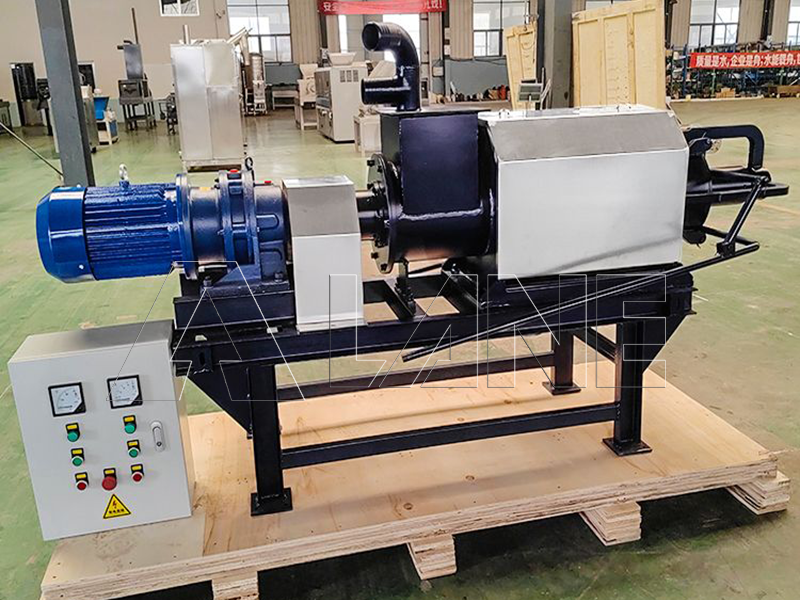
Screw Press Dewaterer: A Comprehensive Guide to Efficient Wastewater Treatment
For industries such as wastewater treatment, food processing, and agriculture, the need for efficient dewatering solutions is paramount. One of the most reliable and effective technologies is the screw press dewaterer. This machine not only helps reduce the liquid content of sludge, but also promotes sustainable waste management. In this article, we will cover the core aspects of the screw press dewatering system, including its functions, applications, benefits, and more.
A screw press dewaterer is a mechanical device used to separate liquid from solid matter. Its main function is to use a screw mechanism to apply continuous pressure to the slurry mixture, pushing the liquid through the filtration system while retaining the solid matter. This process is essential for industries that need to manage large amounts of wastewater, sludge, or similar by-products.
Dewatering technology has evolved significantly over the past few decades. In the past, traditional methods such as gravity settling, centrifugal dewatering, and belt presses were widely used. However, these methods often require high energy inputs and have limited efficiency in removing water from certain materials. The invention of the screw press dewaterer revolutionized the industry’s approach to solid-liquid separation, offering a more energy-efficient, lower-maintenance alternative.
A screw press dewaterer consists of several key components that work together to achieve optimal dewatering:

Screw: The core component that rotates and applies pressure to the material.
Motor: Powers the screw’s rotation.
Filtration system: Separates liquid from solids, typically using a screen or filter.
Outlet: Where the dewatered solids are discharged.
Each part performs a specific role to ensure the dewatering process is as efficient as possible.
The operation of a screw press dewaterer involves several key stages:

Mechanical Pressing
The machine first feeds the slurry into the system. The screw rotates, pushing the material forward while applying increasing pressure. As the material advances, liquid is squeezed out through small holes or filters.
Filtration Mechanism
The separated liquid is collected by the filtration system to a designated outlet. Meanwhile, the dewatered solid material continues to flow to the discharge port. The system ensures continuous operation and is therefore highly efficient for large-scale dewatering needs.
Selecting the right screw press dewaterer requires careful consideration of several factors:
Capacity and throughput
Make sure the capacity of the machine matches the needs of your operation. Oversizing or undersizing the equipment will lead to inefficiencies and increased costs.
Material compatibility
Different screw press models are designed to handle specific types of sludge or mud. Evaluate the compatibility of the machine with the material to be processed to avoid operational issues.
1.How often should I service my screw press dewaterer?
Scheduled maintenance should be performed every 6 to 12 months, depending on the frequency of use.
2.Can screw press dewaterers handle various types of sludge?
Yes, these machines can handle many types of sludge, but the material should be compatible with the machine’s filtration system.
3.What are the energy consumption levels of screw presses?
Screw presses are energy efficient and their consumption levels are generally lower than centrifuge systems.
4.How can I prevent my screw press from clogging?
Regular cleaning and pre-treatment of the material before feeding it into the machine can prevent clogging.
5.Which industries benefit most from a screw press dewatering machine?
Industries such as wastewater treatment, food processing and agriculture benefit greatly due to the need for effective liquid-solid separation.
6.How long does a screw press dewatering machine typically last?
With proper maintenance, these machines can last for 10 to 20 years.
In summary, a screw press dewatering machine is a robust, energy-efficient and cost-effective solution for industries that require effective dewatering. Its sustainability and versatility make it a top choice for a wide range of applications, ensuring its future place in wastewater management.
For more details, please feel free to contact us.
Henan Lane Heavy Industry Machinery Technology Co., Ltd.
Email: sales2@lanesvc.com
Contact number: +86 15515885328
Whatsapp: +86 15515885328
Leave a Comment
Latest Posts
LANE has more than 500 successful cases and is committed to providing customers with first-class solutions, high-end machinery and equipment, and one-stop pre-sales, sales and after-sales comprehensive customer service.